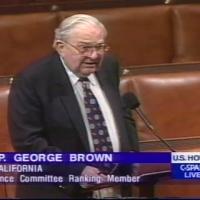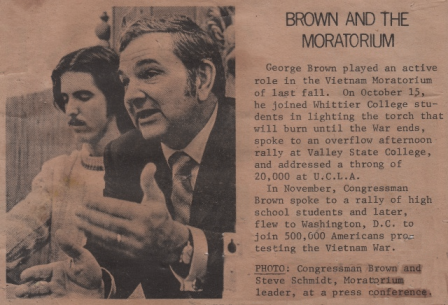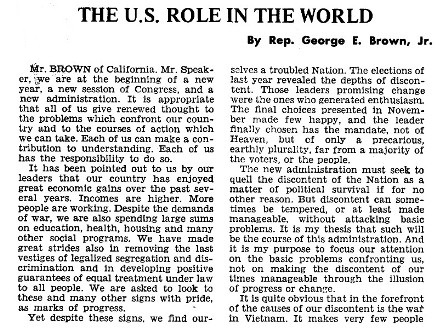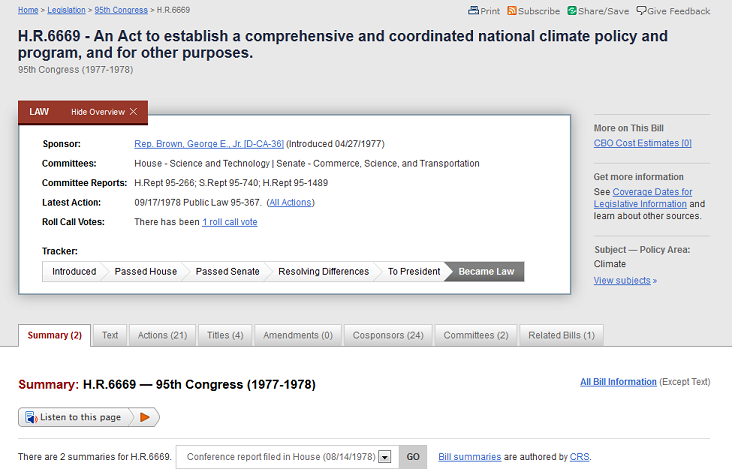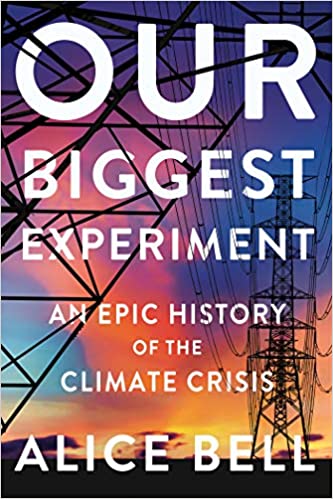File:George E. Brown official portrait.jpg: Difference between revisions
Siterunner (talk | contribs) No edit summary |
Siterunner (talk | contribs) No edit summary |
||
| (23 intermediate revisions by the same user not shown) | |||
| Line 1: | Line 1: | ||
<big><big><big>Congressman George E. Brown</big></big></big> | |||
[https://www.greenpolicy360.net/w/George_E._Brown_Jr <big>'''George E. Brown'''</big>] | |||
Room 2318 of the Rayburn House Office Building, the Committee on Science, Space, and Technology, Subcommittee on Space | |||
July 3, 2021 | |||
'''GreenPolicy360 Siterunner:''' | |||
So I turn on the TV and the House science committee is in the Rayburn Bldg, and my memories return of hearing Room 2318. Twenty years after the passing of the Congressman who was often called "Big Science", there's [https://greenpolicy360.net/w/File:George_E._Brown_official_portrait.jpg '''George's official portrait on the science committee wall'''] looking out at the latest and his generational legacy. Rayburn is where the programs he proposed and shepherded into existence as a science committee chair and senior member for three decades were discussed, debated, and decided. It was democracy in action at its best. The now historic, ongoing programs he envisioned and set in motion included (hold on, this is a long list) -- the Science and technology office advising the president; the Environmental Protection Agency (EPA), yes the history of the EPA's formation is a story in itself; the Landsat program, the longest-running Earth Science study from space and and a constellation of Earth Science research missions from space, each advancing data, measuring and monitoring Earth systems, and all producing results that enable 'navigation', advising, guiding and available for planet citizens, planet scientists and current policy decision-making. | |||
This week's House science hearing was on the consequences of global warming -- wildfires and how to measure them, track them, prevent them, intervene .... it almost brought tears to my eyes. Next to no one knows his name, but I do.... tip of the green hat to George | |||
* https://science.house.gov/hearings/the-state-of-federal-wildland-fire-science-examining-opportunities-for-further-research-and-coordination | |||
Read more about George Brown -- | |||
[[File:George Brown, Sci Com't.jpg]] | |||
<small>* https://www.greenpolicy360.net/w/George_E._Brown_Jr</small> | |||
<big>'''Reflecting on the Life of George E. Brown'''</big> | |||
'''Steve Schmidt / GreenPolicy360 Siterunner''': George was the man who convinced me to look at politics as a serious calling. When I was a young teenager in East LA, looking out at a larger world in which I had yet to travel, and debating nuclear proliferation, the debate topic of the year as high schools were considering why sirens were on occasion loudly going off and forcing us to crawl under our desks, the man I got to know in Monterey Park was at the beginning of his career in politics and science. | |||
For the next 35 years he was my mentor, later a colleague, and always an inspiration of what can be done to make a difference and create a better world. George was a visionary with tousled hair, a professorial look, a smelly pipe and a twinkle in his eye. He was always there for his constituents, like me, an East LA kid who grew up to be a friend and cohort as we did green work over the years. | |||
George was a real presence in Congress, in science and environmental achievements, from the first Earth Day to the first federal program to study climate science, from the first earth science research from space to 'big science' projects that carry on to this day. | |||
Back in the early days, we would speak of these political efforts, and especially the immediate reality of the 'smog' in LA, which might have been at that time the worst in the world, and how we needed to clean up the air. I spoke of my asthma with George and his engineering background provided his perspective with advantages over the run-of-the-mill politicians in DC in knowing how to best address the pollution from cars, the gas engines that were becoming ubiquitous in fast-growing suburban Southern California. | |||
When your GreenPolicy360 siterunner was in college at USC in the late 1960s and becoming deeply involved in politics, George and I continued to speak of the children in Los Angeles and their lung problems and scientific and medical studies that were vividly (shockingly) demonstrating the consequences of growing up in the most polluted air in the country. | |||
George helped my organizing work and I helped his especially in the "decade of the environment" following the first Earth Day in 1970 and the building of a foundation of environmental legislation. | |||
As George became a leader in Congress and ran for U.S. Senate, opposing the Vietnam war and I helped organize in DC what became the largest anti-war group, the Vietnam Moratorium Committee, we spoke of war and peace and [http://www.greenpolicy360.net/w/File:George_Brown_1969-Reflections_on_US_Role_in_the_World.png how to change the nation's war policies and role in the world]. His efforts to change U.S. foreign policy [https://www.greenpolicy360.net/w/Earth_Day_Memories_on_the_50th_Anniversary led to the first Earth Day.] | |||
:[[File:Rep George Brown and Steve Schmidt - Oct 15, 1969 - 448x305.png]] | |||
George worked tirelessly in Congress for change. With [http://www.greenpolicy360.net/mw/images/Can_our_environment_be_saved_George_Brown-Omnibus_Environmental_Bill_1969.pdf saving the environment in his sight], he moved conservative and liberal politicians in his direction. George saw connections that transcended states and nations. A key goal was setting up an EPA as an umbrella agency to coordinate environmental federal and federal-state efforts... George was a "first-mover" as the term has come to be known. He had a big-picture plan and set out to accomplish it. He succeeded on multiple fronts, pushing forward the idea and the vision for 'omnibus' legislation. The '''Environmental Protection Agency''' was founded and historic initial green laws and regulations for environmental protection and security were passed. | |||
• | |||
George was among the first voices to be raised warning about the environmental threat of climate disruption and, although few realize, he was at the forefront of the initial efforts to study the climate, pushing the development of initial atmospheric science programs and missions of NASA and public/private research. He combined his engineering skills with his legislative reach. | |||
George E. Brown, in fact, drafted the "National Climate Program Act" of 1978. | |||
[http://www.greenpolicy360.net/mw/images/National_Climate_Program_Act_Public_Law_95-367_Sept_1978.pdf '''1978 Climate Act PDF via GreenPolicy360'''] | |||
Rep. George Brown brought his extensive work with U.S. top scientists, featured in the work of 1977's '''Energy and Climate Report of the National Academy of Sciences and follow on 1979 [https://www.nap.edu/read/12181/chapter/1 Academy Climate Science report] that was [https://phys.org/news/2019-07-charney-years-scientists-accurately-climate.html presciently accurate] in its predictions. | |||
The Congressman-Engineer emphasized, constantly to me and in his work, the essential important of having accurate data in order to make the best possible engineering decisions. He imprinted, if I could use this word to its fullest meaning, the vital nature of gathering information with studies over time to monitor changes. He was in a position, one of the most powerful positions in government, to shape the policies of science -- atmospheric science, earth science, big science. | |||
Whenever we see the NASA 'marching directive' [https://www.greenpolicy360.net/w/File:You_can_manage_only_what_you_can_measure_Dr_David_Crisp,_OCO-2,_June_2014_m.jpg here], think of George. The original mission statement of our nation's first ventures into space began with studying the home planet. | |||
[[File:You can manage only what you can measure Dr David Crisp, OCO-2, June 2014 m.jpg]] | |||
The Congressman left us a legacy of vision and action against threats to the atmosphere, earth's life systems, and sustainability. | |||
We have, all who believe in the importance of science, carried forward his thoughts over the years since the 1960s and 1970s. As best we could, we have carried on against deep odds and opposition by those with other goals. | |||
<big>'''[[PlanetCitizen]]'''</big> | |||
<big>'''[[Planet Citizens]]'''</big> | |||
<big>'''[[Climate News]]'''</big> | |||
<big>'''[[Earth and Space, Politics]]'''</big> | |||
<big>'''[[Earth Science Research from Space]]'''</big> | |||
<big>'''[[New Definitions of National Security]]'''</big> | |||
<big>'''[[Earth Right Now]]'''</big> | |||
<big>'''[[Earth Science Vital Signs]]'''</big> | |||
<big>'''[[Landsat data users handbook]]'''</big> | |||
Representative Brown was a first mover in the LANDSAT program .... as well as supporting and extending an encompassing array of NASA 'big science, earth science' missions. He cited the mission of NASA and championed the inter-agency work as critical to national security. | |||
The Original Mission Statement of NASA ((1958) provided Congressional intent and guidance to the first generation of space programs. George, if he were here, would've done I am certain everything within his power to protect the original mission statement... | |||
George, as chairman of the House of Representatives Committee on Science, Space, and Technology, over the years until his sudden death in 1999 played a key role in nuclear weapons oversight. As with the National Climate Act he drafted in the 1970s identifying global warming as a serious, even existential threat, his focus on the threat from his first year in office in the early 1960s saw him leading efforts to reduce the nuclear stockpile and reducing the imminent threat of global destruction. The Congressman's work on non-proliferation stands out. George's letter to the head of the Department of Energy in February 1992 remains a testimony to the need for a new "strategic plan" for the Department of Energy (DOE) nuclear weapons labs. | |||
| |||
[[File:The U.S. Role in the World ... Congressman George E Brown - 1969.jpg]] | |||
| |||
[[File:US Role in the World, Feb 1969 George E Brown 1.pdf]] | |||
* https://www.greenpolicy360.net/mw/images/US_Role_in_the_World%2C_Feb_1969_George_E_Brown_1.pdf | |||
[[File:US Role George E Brown 2.pdf]] | |||
* https://www.greenpolicy360.net/mw/images/US_Role_George_E_Brown_2.pdf | |||
[[File:US Role George E Brown 3.pdf]] | |||
* https://www.greenpolicy360.net/mw/images/US_Role_George_E_Brown_3.pdf | |||
| |||
Congressman Brown an alternative to the existential threat of nuclear weapons as the Cold War came to an end and alternatives were envisioned. Your GreenPolicy360 editor, at that time, was often in communication with the Congressman on this issue, as I also worked alongside Governor Jerry Brown in formulating the presidential campaign platform of our campaign in 1992. Nuclear issues were top of mind, as were nuclear reduction efforts, non-proliferation and treaties to reduce nuclear stockpiles and build monitoring conventions. George assisted many public interest groups in nuclear oversight work, such as the Los Alamos Study Group. His quest to promote peace was steady. | |||
[[File:George Brown letter-1992 to US Energy Dept-nuclear weapons future.pdf]] | |||
Today many of the actions of George Brown continue as models for citizens, cities and nations of the world. California and a green political/environmental protection movement that George helped to begin continue to be out in front with ideas to improve quality of life. | |||
In our GreenPolicy360 work, George's work continues. Even as political opposition to environmental work, anti-nuclear work, anti-war work is at risk, as we look out at a [http://www.strategicdemands.com strategic horizon with pressing demands], the foundations put in place by an earlier generation remain strong. | |||
George remains with us always in his legacy of accomplishment. I miss him often but know he is still around. I feel him when I write of green ideas and look to our kids and education and our shared future... | |||
[https://www.greenpolicy360.net/mw/images/George_Brown_letter-1992_to_US_Energy_Dept-nuclear_weapons_future.pdf George Brown / On Nuclear Weapons] | |||
[http://www.greenpolicy360.net/w/Category:Environmental_Laws Environmental Laws, Models Going Forward] | |||
[http://www.greenpolicy360.net/w/National_Environmental_Policy_Act US National Environmental Policy Act, a "Magna Carta"] | |||
''Via Wikipedia / https://en.wikipedia.org/wiki/George_Brown_Jr.'' | |||
''Brown was known as a champion for science. He left behind a deep and expansive legacy that has shaped science and science policy in America. Among some of his many accomplishments during his service on the House Science Committee:'' | |||
• ''Established the first federal climate change research program in the [https://www.congress.gov/bill/95th-congress/house-bill/06669 Federal Climate Program Act of 1978]'' | |||
• ''Established the [https://en.wikipedia.org/wiki/Office_of_Science_and_Technology_Policy Office of Science and Technology Policy]'' | |||
• ''Established the [https://en.wikipedia.org/wiki/United_States_Environmental_Protection_Agency Environmental Protection Agency]'' | |||
• ''Established the [https://en.wikipedia.org/wiki/Office_of_Technology_Assessment Office of Technology Assessment]'' | |||
* https://strategicdemands.com/earth-system-observatory/ | |||
'''George's Obituary:''' | |||
'''Born: March 6, 1920 - Died: July 15, 1999 (aged 79)''' | |||
[https://www.latimes.com/archives/la-xpm-1999-jul-17-mn-56747-story.html '''Los Angeles Times, July 17, 1999'''] | |||
[[File:George's memory.jpg]] | |||
[https://www.c-span.org/video/?151268-1/rep-george-brown-memorial-service '''George's Memorial Service / C-Span'''] | |||
<big>[[PlanetCitizen]]</big> | |||
'''A Conversation with George E. Brown Jr.''' | |||
: '''The Congressman Who Loved Science''' | |||
[http://www.nytimes.com/1999/03/09/science/a-conversation-with-george-e-brown-jr-the-congressman-who-loved-science.html '''New York Times, March 9, 1999'''] | |||
''Mr. Brown, 79, has been a crucial supporter of manned and unmanned space exploration. He was an author of legislation creating the Environmental Protection Agency, a prime mover behind efforts to include ozone layer protections in the Clean Air Act...'' | |||
''"From my earliest days, I was fascinated by science," Mr. Brown said in his offices on Capitol Hill, his wife, Marta, at his side. "Also by my earliest days, I was fascinated by a utopian vision of what the world could be like. I've thought that science could be the basis for a better world, and that's what I've been trying to do all these years."'' | |||
[[File:US Public Law 95-367.png]] | |||
George Brown envisioned scientific research as key to understanding and acting upon climate change / global warming. The programs and missions to measure and monitor earth systems that he was instrumental in setting in motion, and that he shepherded in the 1970s, 80s and 90s, became the basis for climate policies extending into the 21st century. | |||
The urgent need for data to make the climate case for action was central in the work of Congressman Brown. | |||
·························································································· | |||
<big><big>[[Our Biggest Experiment]]</big></big> | |||
* https://www.greenpolicy360.net/w/Our_Biggest_Experiment | |||
: [[File:Our Biggest Experiment - by Alice Bell.jpg]] | |||
[[Category:Air Pollution]]] | |||
[[Category:Atmospheric Science]] | |||
[[Category:Climate Change]] | |||
[[Category:Climate Policy]] | |||
[[Category:Environmental Protection]] | |||
[[Category:Environmental Security]] | |||
[[Category:Externalities]] | |||
[[Category:Global Security]] | |||
[[Category:Global Warming]] | |||
[[Category:Green Graphics]] | |||
[[Category:GreenPolicy360]] | |||
[[Category:Green Politics]] | |||
[[Category:New Definitions of National Security]] | |||
[[Category:Peace]] | |||
[[Category:Planet Citizen]] | |||
[[Category:Planet Citizens]] | |||
[[Category:Planet Citizens, Planet Scientists]] | |||
[[Category:Strategic Demands]] | |||
[[Category:US Environmental Protection Agency]] | |||
[[Category:Whole Earth]] | |||
Latest revision as of 14:49, 1 June 2023
Congressman George E. Brown
Room 2318 of the Rayburn House Office Building, the Committee on Science, Space, and Technology, Subcommittee on Space
July 3, 2021
GreenPolicy360 Siterunner:
So I turn on the TV and the House science committee is in the Rayburn Bldg, and my memories return of hearing Room 2318. Twenty years after the passing of the Congressman who was often called "Big Science", there's George's official portrait on the science committee wall looking out at the latest and his generational legacy. Rayburn is where the programs he proposed and shepherded into existence as a science committee chair and senior member for three decades were discussed, debated, and decided. It was democracy in action at its best. The now historic, ongoing programs he envisioned and set in motion included (hold on, this is a long list) -- the Science and technology office advising the president; the Environmental Protection Agency (EPA), yes the history of the EPA's formation is a story in itself; the Landsat program, the longest-running Earth Science study from space and and a constellation of Earth Science research missions from space, each advancing data, measuring and monitoring Earth systems, and all producing results that enable 'navigation', advising, guiding and available for planet citizens, planet scientists and current policy decision-making.
This week's House science hearing was on the consequences of global warming -- wildfires and how to measure them, track them, prevent them, intervene .... it almost brought tears to my eyes. Next to no one knows his name, but I do.... tip of the green hat to George
Read more about George Brown --
* https://www.greenpolicy360.net/w/George_E._Brown_Jr
Reflecting on the Life of George E. Brown
Steve Schmidt / GreenPolicy360 Siterunner: George was the man who convinced me to look at politics as a serious calling. When I was a young teenager in East LA, looking out at a larger world in which I had yet to travel, and debating nuclear proliferation, the debate topic of the year as high schools were considering why sirens were on occasion loudly going off and forcing us to crawl under our desks, the man I got to know in Monterey Park was at the beginning of his career in politics and science.
For the next 35 years he was my mentor, later a colleague, and always an inspiration of what can be done to make a difference and create a better world. George was a visionary with tousled hair, a professorial look, a smelly pipe and a twinkle in his eye. He was always there for his constituents, like me, an East LA kid who grew up to be a friend and cohort as we did green work over the years.
George was a real presence in Congress, in science and environmental achievements, from the first Earth Day to the first federal program to study climate science, from the first earth science research from space to 'big science' projects that carry on to this day.
Back in the early days, we would speak of these political efforts, and especially the immediate reality of the 'smog' in LA, which might have been at that time the worst in the world, and how we needed to clean up the air. I spoke of my asthma with George and his engineering background provided his perspective with advantages over the run-of-the-mill politicians in DC in knowing how to best address the pollution from cars, the gas engines that were becoming ubiquitous in fast-growing suburban Southern California.
When your GreenPolicy360 siterunner was in college at USC in the late 1960s and becoming deeply involved in politics, George and I continued to speak of the children in Los Angeles and their lung problems and scientific and medical studies that were vividly (shockingly) demonstrating the consequences of growing up in the most polluted air in the country.
George helped my organizing work and I helped his especially in the "decade of the environment" following the first Earth Day in 1970 and the building of a foundation of environmental legislation.
As George became a leader in Congress and ran for U.S. Senate, opposing the Vietnam war and I helped organize in DC what became the largest anti-war group, the Vietnam Moratorium Committee, we spoke of war and peace and how to change the nation's war policies and role in the world. His efforts to change U.S. foreign policy led to the first Earth Day.
George worked tirelessly in Congress for change. With saving the environment in his sight, he moved conservative and liberal politicians in his direction. George saw connections that transcended states and nations. A key goal was setting up an EPA as an umbrella agency to coordinate environmental federal and federal-state efforts... George was a "first-mover" as the term has come to be known. He had a big-picture plan and set out to accomplish it. He succeeded on multiple fronts, pushing forward the idea and the vision for 'omnibus' legislation. The Environmental Protection Agency was founded and historic initial green laws and regulations for environmental protection and security were passed.
•
George was among the first voices to be raised warning about the environmental threat of climate disruption and, although few realize, he was at the forefront of the initial efforts to study the climate, pushing the development of initial atmospheric science programs and missions of NASA and public/private research. He combined his engineering skills with his legislative reach.
George E. Brown, in fact, drafted the "National Climate Program Act" of 1978.
1978 Climate Act PDF via GreenPolicy360
Rep. George Brown brought his extensive work with U.S. top scientists, featured in the work of 1977's Energy and Climate Report of the National Academy of Sciences and follow on 1979 Academy Climate Science report that was presciently accurate in its predictions.
The Congressman-Engineer emphasized, constantly to me and in his work, the essential important of having accurate data in order to make the best possible engineering decisions. He imprinted, if I could use this word to its fullest meaning, the vital nature of gathering information with studies over time to monitor changes. He was in a position, one of the most powerful positions in government, to shape the policies of science -- atmospheric science, earth science, big science.
Whenever we see the NASA 'marching directive' here, think of George. The original mission statement of our nation's first ventures into space began with studying the home planet.
The Congressman left us a legacy of vision and action against threats to the atmosphere, earth's life systems, and sustainability.
We have, all who believe in the importance of science, carried forward his thoughts over the years since the 1960s and 1970s. As best we could, we have carried on against deep odds and opposition by those with other goals.
Earth Science Research from Space
New Definitions of National Security
Representative Brown was a first mover in the LANDSAT program .... as well as supporting and extending an encompassing array of NASA 'big science, earth science' missions. He cited the mission of NASA and championed the inter-agency work as critical to national security.
The Original Mission Statement of NASA ((1958) provided Congressional intent and guidance to the first generation of space programs. George, if he were here, would've done I am certain everything within his power to protect the original mission statement...
George, as chairman of the House of Representatives Committee on Science, Space, and Technology, over the years until his sudden death in 1999 played a key role in nuclear weapons oversight. As with the National Climate Act he drafted in the 1970s identifying global warming as a serious, even existential threat, his focus on the threat from his first year in office in the early 1960s saw him leading efforts to reduce the nuclear stockpile and reducing the imminent threat of global destruction. The Congressman's work on non-proliferation stands out. George's letter to the head of the Department of Energy in February 1992 remains a testimony to the need for a new "strategic plan" for the Department of Energy (DOE) nuclear weapons labs.
File:US Role in the World, Feb 1969 George E Brown 1.pdf
File:US Role George E Brown 2.pdf
File:US Role George E Brown 3.pdf
Congressman Brown an alternative to the existential threat of nuclear weapons as the Cold War came to an end and alternatives were envisioned. Your GreenPolicy360 editor, at that time, was often in communication with the Congressman on this issue, as I also worked alongside Governor Jerry Brown in formulating the presidential campaign platform of our campaign in 1992. Nuclear issues were top of mind, as were nuclear reduction efforts, non-proliferation and treaties to reduce nuclear stockpiles and build monitoring conventions. George assisted many public interest groups in nuclear oversight work, such as the Los Alamos Study Group. His quest to promote peace was steady.
File:George Brown letter-1992 to US Energy Dept-nuclear weapons future.pdf
Today many of the actions of George Brown continue as models for citizens, cities and nations of the world. California and a green political/environmental protection movement that George helped to begin continue to be out in front with ideas to improve quality of life.
In our GreenPolicy360 work, George's work continues. Even as political opposition to environmental work, anti-nuclear work, anti-war work is at risk, as we look out at a strategic horizon with pressing demands, the foundations put in place by an earlier generation remain strong.
George remains with us always in his legacy of accomplishment. I miss him often but know he is still around. I feel him when I write of green ideas and look to our kids and education and our shared future...
George Brown / On Nuclear Weapons
Environmental Laws, Models Going Forward
US National Environmental Policy Act, a "Magna Carta"
Via Wikipedia / https://en.wikipedia.org/wiki/George_Brown_Jr.
Brown was known as a champion for science. He left behind a deep and expansive legacy that has shaped science and science policy in America. Among some of his many accomplishments during his service on the House Science Committee:
• Established the first federal climate change research program in the Federal Climate Program Act of 1978
• Established the Office of Science and Technology Policy
• Established the Environmental Protection Agency
• Established the Office of Technology Assessment
George's Obituary:
Born: March 6, 1920 - Died: July 15, 1999 (aged 79)
Los Angeles Times, July 17, 1999
George's Memorial Service / C-Span
A Conversation with George E. Brown Jr.
- The Congressman Who Loved Science
Mr. Brown, 79, has been a crucial supporter of manned and unmanned space exploration. He was an author of legislation creating the Environmental Protection Agency, a prime mover behind efforts to include ozone layer protections in the Clean Air Act...
"From my earliest days, I was fascinated by science," Mr. Brown said in his offices on Capitol Hill, his wife, Marta, at his side. "Also by my earliest days, I was fascinated by a utopian vision of what the world could be like. I've thought that science could be the basis for a better world, and that's what I've been trying to do all these years."
George Brown envisioned scientific research as key to understanding and acting upon climate change / global warming. The programs and missions to measure and monitor earth systems that he was instrumental in setting in motion, and that he shepherded in the 1970s, 80s and 90s, became the basis for climate policies extending into the 21st century.
The urgent need for data to make the climate case for action was central in the work of Congressman Brown.
··························································································
File history
Click on a date/time to view the file as it appeared at that time.
| Date/Time | Thumbnail | Dimensions | User | Comment | |
|---|---|---|---|---|---|
| current | 17:52, 6 July 2021 |  | 336 × 448 (75 KB) | Siterunner (talk | contribs) |
You cannot overwrite this file.
File usage
- Air Pollution
- Atmospheric Science
- Climate Change
- Climate Policy
- Environmental Protection
- Environmental Security
- Externalities
- Global Security
- Global Warming
- Green Graphics
- GreenPolicy360
- Green Politics
- New Definitions of National Security
- Peace
- Planet Citizen
- Planet Citizens
- Planet Citizens, Planet Scientists
- Strategic Demands
- US Environmental Protection Agency
- Whole Earth
